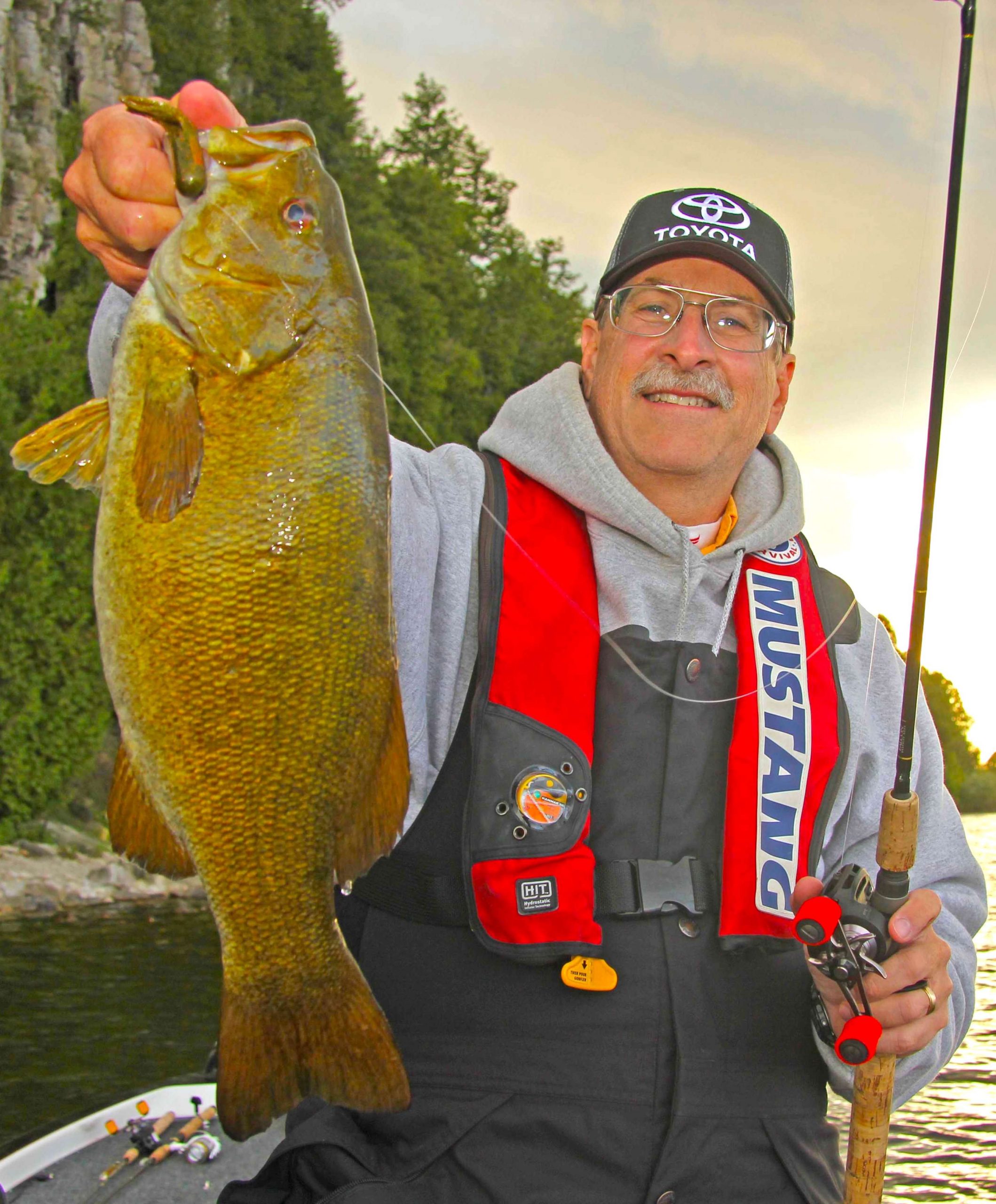
When the Academy Sports + Outdoors Bassmaster Classic presented by Huk was moved from March to June due to concerns over the COVID-19 pandemic, B.A.S.S. staff and Texas Parks & Wildlife Department (TPWD) began planning a new approach to the weigh-in process to help maintain the integrity and fan-appeal of the Classic but maximize the survival of bass returned to Lake Ray Roberts.
B.A.S.S. Conservation Director Gene Gilliland said, “We worked with TPWD over the course of several weeks to refine the plan and define the roles that our staff, their biologists and our volunteer B.A.S.S. Nation Conservation Directors would be responsible for.”
The plan was executed to perfection, and the results exceeded expectations. Despite the heat, the distance, the traffic and the logistics that are inherent to the Bassmaster Classic, the team returned over 98% of the bass weighed during the 51st Classic to the lake where they were caught. The results are what would have been expected had the tournament been held in March as originally scheduled under much less harsh conditions.
“To see these results in Texas in the early summer was amazing — and a testimony to both the anglers and our fish care crew doing everything right,” Gilliland added.
Days 1 and 2 saw lakeside weigh-ins for all 54 anglers. Anglers were allowed to bring their two largest bass each day to show the fans in Dickies Arena. The rest of their day’s catch was placed in the B.A.S.S. Yamaha/AFTCO Live Release boat and returned to the lake after the weigh-in concluded (above).
Texas Parks & Wildlife biologists and B.A.S.S. staff prepped the livewells containing the fish that were being transported to the arena, checking temperatures, and adding ice as necessary.
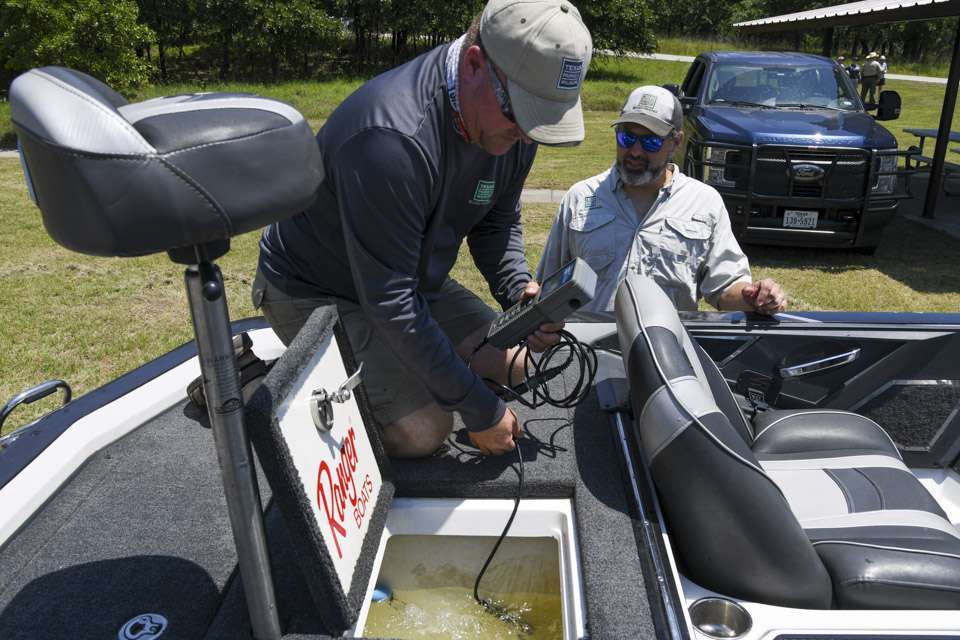
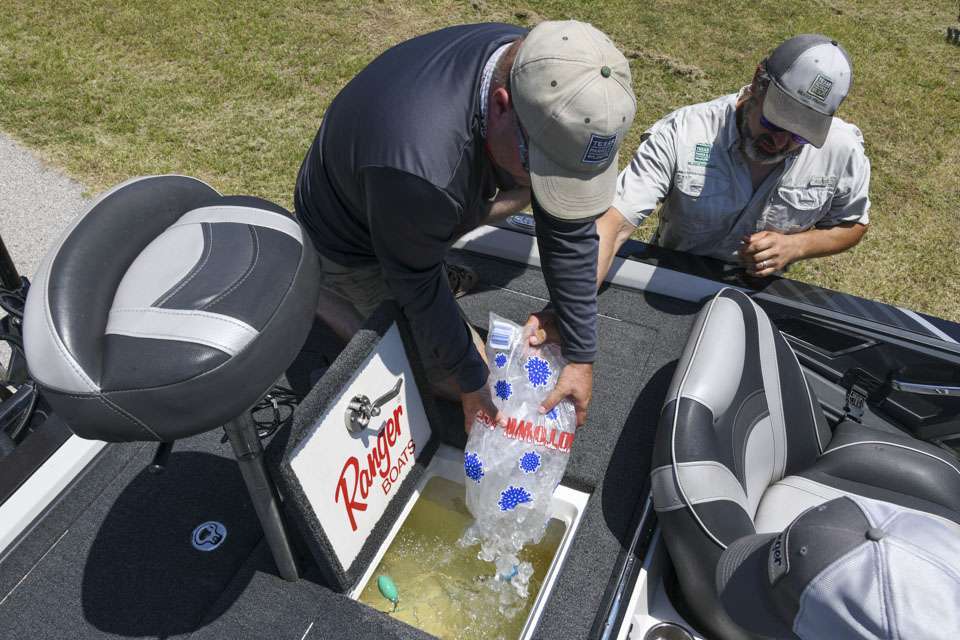
Upon each angler’s arrival at the boat yard in Fort Worth, TPWD biologists and B.A.S.S. Nation volunteers went to work checking water temperatures and oxygen levels in the livewells. The fish were moved to one livewell and a diffuser added so that pure oxygen could be bubbled into the water while the angler’s boat was waiting to enter the arena. Additional ice was added if needed.
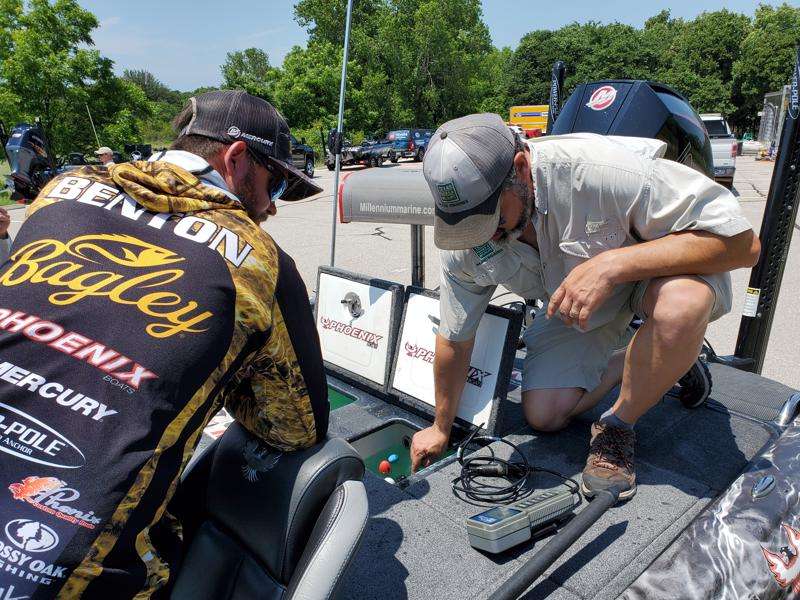
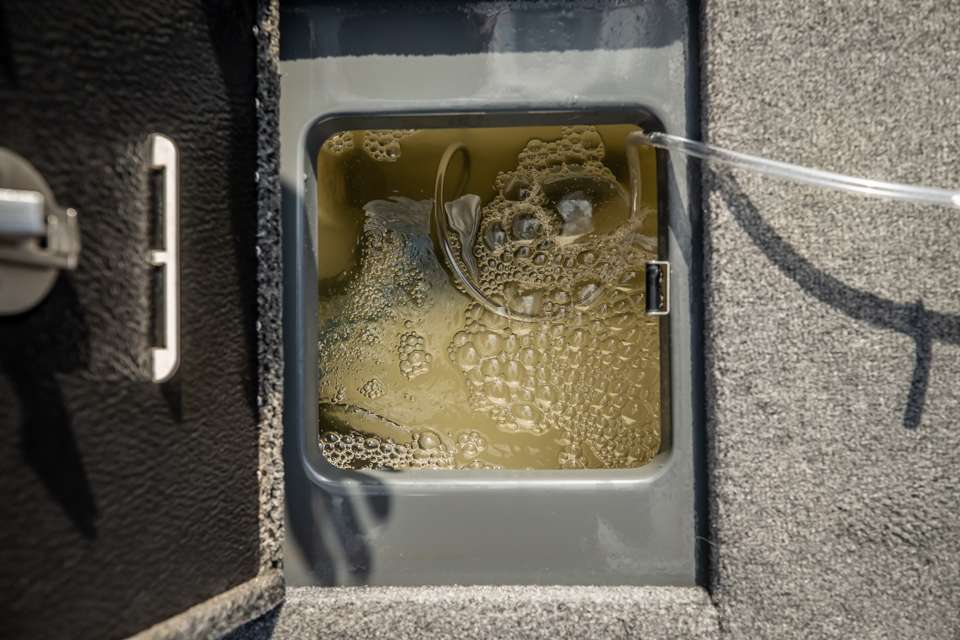
Once inside the arena, the diffuser and bottle were removed, fish were bagged and the boat made its way towards the stage where the angler removed his bag to display his fish to the crowd. On Championship Sunday, with only the top 25 competing, anglers brought in all five bass to be weighed on the scales at the arena.
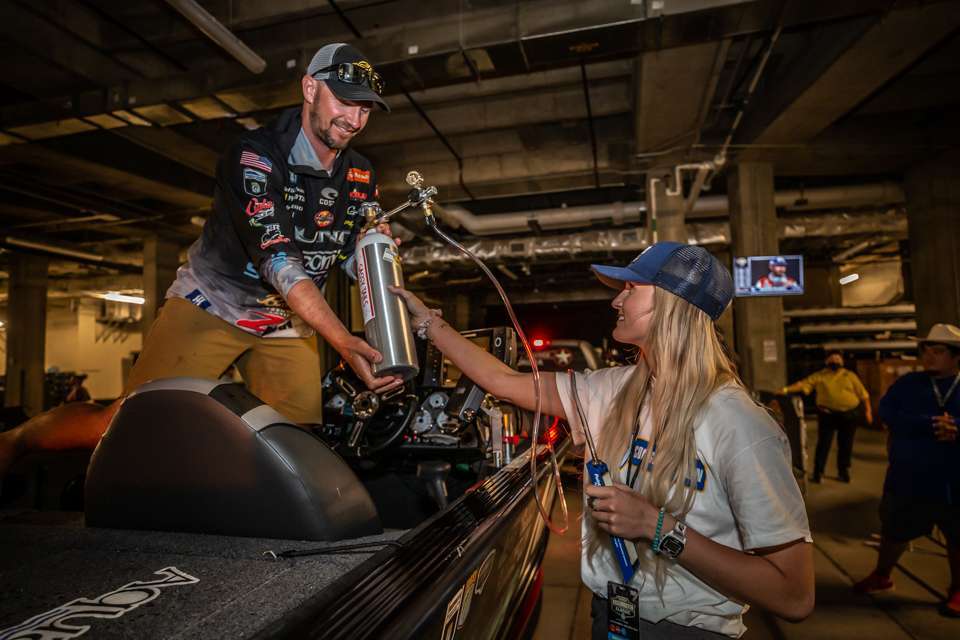
After the angler showed his fish to the fans, volunteers at the side of the stage took the fish from weighmaster Trip Weldon, placed them back in the boat livewell and the boat exited the arena.
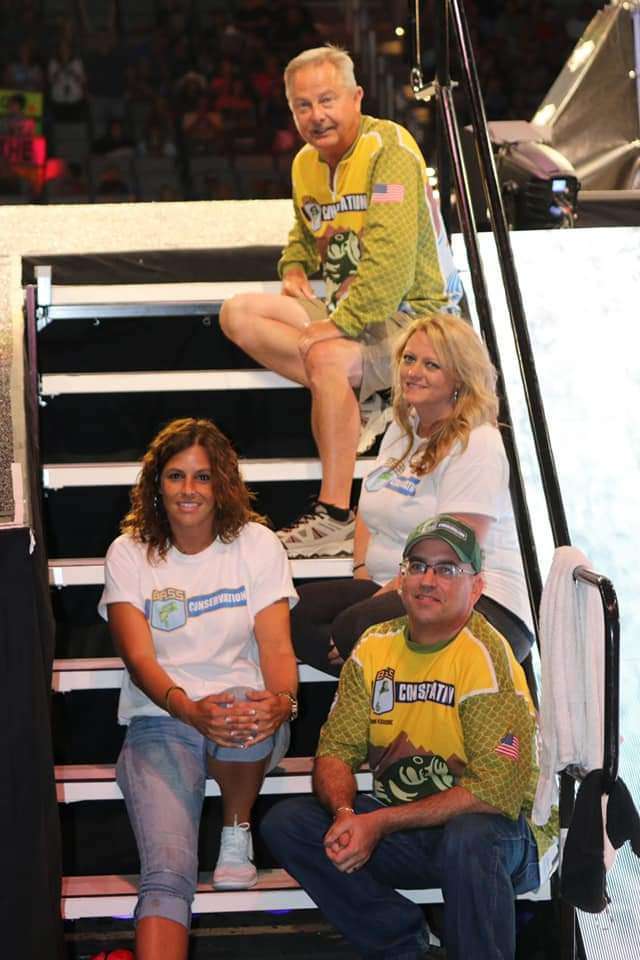
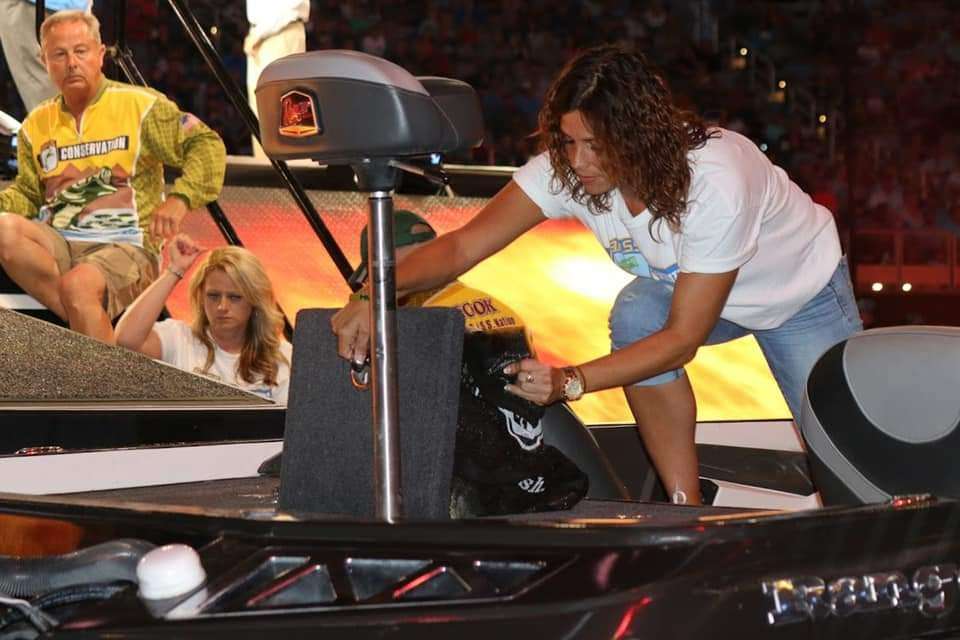
Once backstage, the fish were removed from the livewell and handed to waiting TPWD staff who placed the fish in a cooled, oxygenated fish hauling tank, ready for transport back to Lake Ray Roberts.
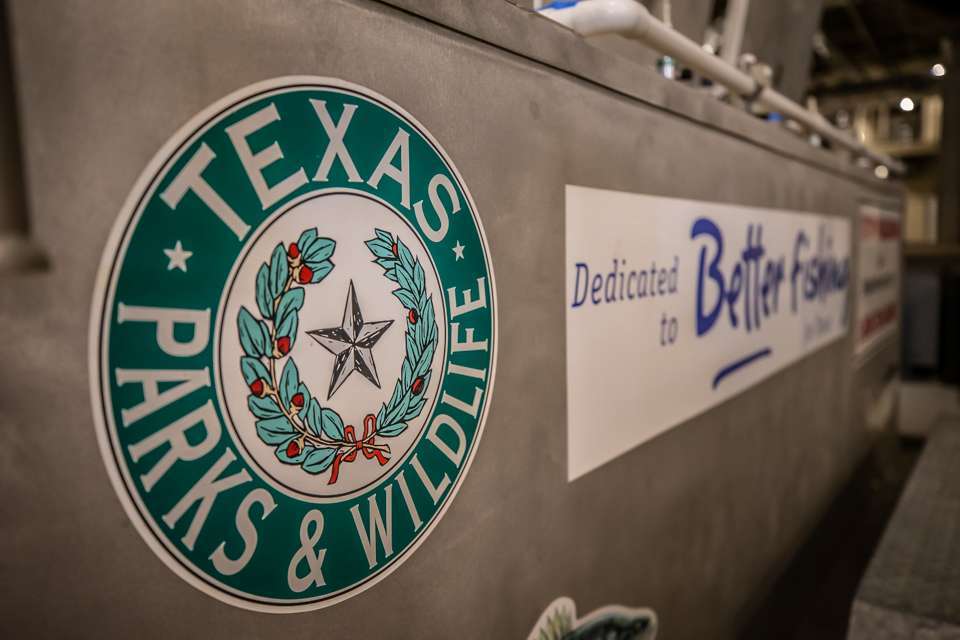
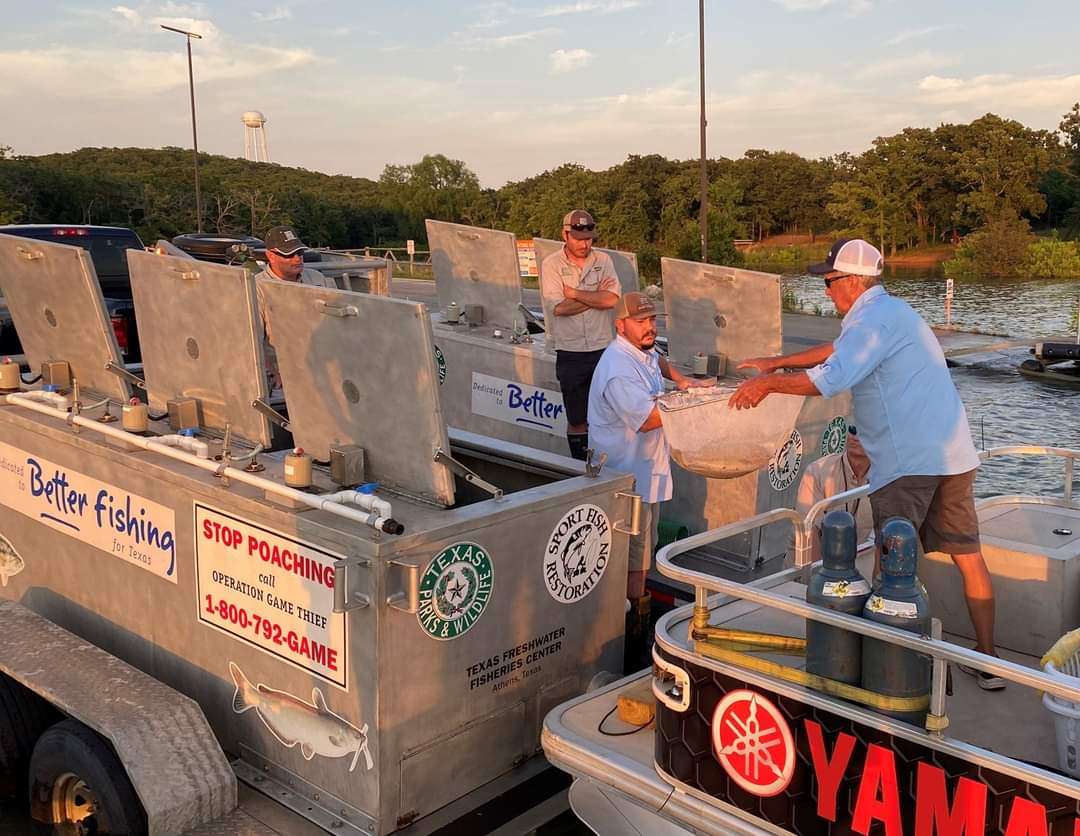
Todd Driscoll, TPWD fisheries biologist who coordinated the agency fish care staff for the Classic, remarked after releasing the last load of bass back into Lake Ray Roberts, “Fish care could not have gone any better.”
There were a lot of moving parts in the plan. Anglers did a remarkable job of caring for their fish during the hot tournament days, using ice and running aerators continuously to maintain water quality in their livewells. And a small army of TPWD staff and B.A.S.S. Nation Conservation volunteers worked the rest of the plan.
And work it did. Over the course of the tournament, Classic anglers caught 495 bass, but the lakeside weigh-in on Days 1 and 2 resulted in 50% fewer fish being transported to Fort Worth with a 98.4% live release rate.
A tip of the cowboy hat to the entire team for a Texas-sized job well done.

